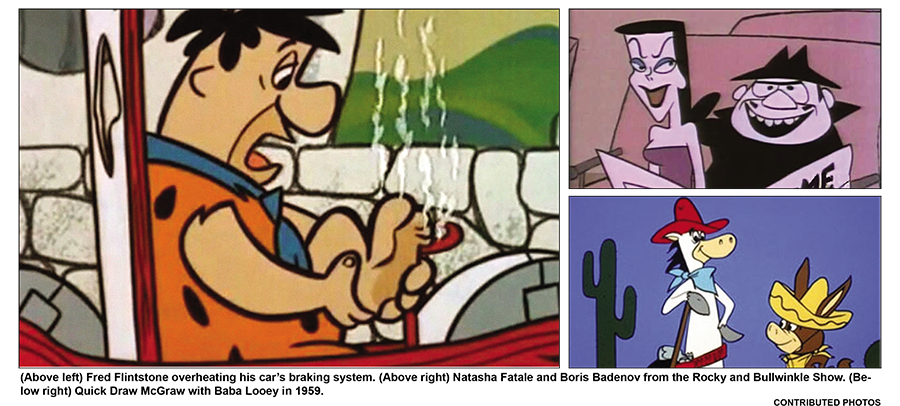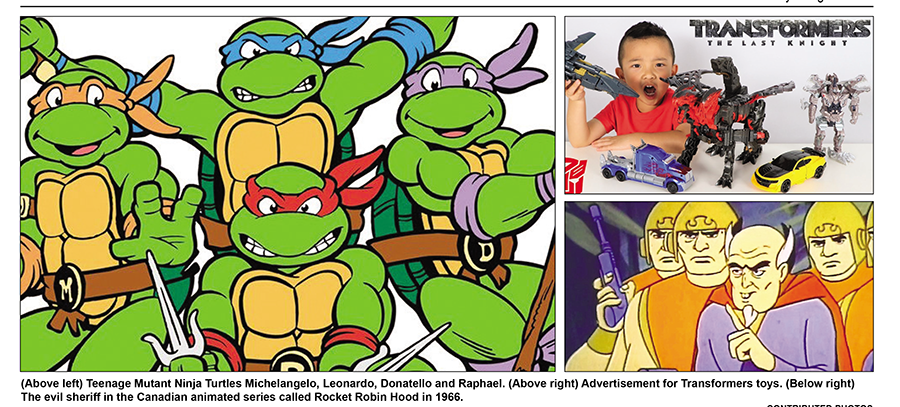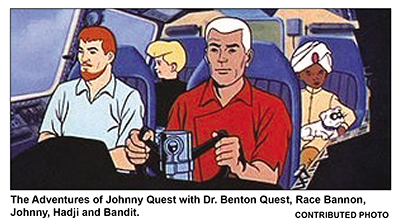
The disappearance of Saturday morning cartoons
Saturday morning television programming in the sixties was a spectacle established primarily for children. Early morning cartoons became a weekly ritual from 8:00 a.m. to approximately 1:00 p.m. every Saturday. This pastime for kids peaked in the mid-1960s and continued into the mid-1990s. All major networks devised marketing schemes in efforts to exploit consumer buying powers. This was done by airing children’s toy commercials during cartoons along with some extra sugary breakfast cereals too.
But cartoons had been in existence long before television sets were ever introduced into homes. In the 1930s, cartoon production companies like Walt Disney and Warner Brothers would show Mickey Mouse and Looney Tunes shorts at movie theatres. Given the limited technology of the time, animators had no choice but to release their animations as shorts.
It wasn’t until 1937 when Walt Disney committed himself to create a full length cartoon movie called Snow White and the Seven Dwarfs. At the same time, there were other animators like the Fleisher Brothers, Walter Lantz, Bob Clampett and Tex Avery that had also been creating their own brand of cartoons. Many of them not necessarily aimed at youngsters. These brands of cartoons had a distinct edginess and urban feel to them while Disney cartoons always seemed to be set either in the country or on the farm. Disney had lovable characters like Mickey Mouse, Donald Duck, Pluto and Goofy. But stars created by the Fleishers featured more sassy and street-smart characters playing lead roles. In the 1930’s, the Fleisher Brothers featured one of the most legendary characters of all time called Popeye the Sailor. He struggled for the affection of Olive Oyl against his arch rival Bluto. A violent fist fight usually occurred where superhuman strength was acquired after the hero ate some spinach.
Beginning in the 1950’s, television sets started becoming much more affordable for middle-class families. As the number of home television sets grew, Warner Brothers began to air their previous shorts in half/hour shows called Looney Tunes and Merrie Melodies with characters Bugs Bunny, Daffy Duck, Foghorn Leghorn, Porky Pig and Elmer Fudd. And when William Hanna and Joseph Barbera got into the game, thirty minute television shows for youngsters really took off. They created many iconic programs like The Flintstones, Huckleberry Hound, Yogi Bear, Quick Draw McGraw, Snagglepuss, Top Hat and The Jetsons.
Children’s viewing took a huge jump in 1958 when songwriter Ross Badasarian produced a record called Alvin and the Chipmunks. The unique song shot up the charts sending lead characters Simon, Theodore and Alvin into mega-star status. The song led to the creation of a successful cartoon series that won two Grammy awards. A second run of the show ran from 1983 to 1990 but had lesser success.
Also in 1958, Huckleberry Hound was introduced to children as a bluetick coonhound with a Southern accent. He always seemed to be labouring in a series of unsuccessful jobs but maintained his cool and always seemed to wind up on top. The show aired until 1962 before going into syndication. It was the first animated show to win an Emmy. Huckleberry Hound’s character continues to make sporadic appearances over the years in other cartoons ranging from The Simpsons to Animaniacs.
Yogi Bear actually made his television debut on an episode of Huckleberry Hound in 1958. He acquired his own animated series in 1961. Up until 1988, Yogi and his sidekick, Boo-Boo, attempted to steal plenty of “pic-a-nic” baskets, generally making Mr. Ranger’s life difficult. Yogi also starred in a 2010 feature film, but the movie had limited success.
Starting in 1959, Quick Draw McGraw and the Rocky and Bullwinkle shows hit the airwaves. Quick Draw was a white horse with a red cowboy hat who acted as a sheriff from the old west. His deputy, a burro named Baba Looey, served as his supportive side-kick. Every week, Bullwinkle and Rocky (the flying squirrel) tried to outsmart their show’s two cold-war spies, Boris and Natasha. This series attempted to appeal to both children and adults for its wry humour and clever cultural satire. A live action movie remake was made in 2000 but had only lukewarm reviews.
From 1964 to 1967, there was another cartoon series called Underdog. The hero was a cape-wearing, masked superhero dog that almost always spoke in rhymes. His most famous rhyming saying was, “There’s no need to fear..... Underdog is here.” Other superhero shows on Saturday mornings were Superman, Hercules, Spider-Man, Space Ghost and Rocket Robin Hood. In the late 1960’s, Scooby-Doo Where Are You, enjoyed a very long run, all the way up to the early 2000’s.
The 1980’s saw consumers fixated about buying new Star Wars figures. Cartoon animators and manufacturers got together with the concept and decided to base their new ‘80s cartoons on actual toys. Many cartoon shows became nothing more than half-hour toy commercials.
With this new blueprint, shows like He-Man - Masters of the Universe, G.I. Joe: A Real American Hero, M.A.S.K. and Transformers became popular. There was no denying that they were really advertisements for toys but they contained a story-line entertaining for children to watch. Other shows using the same format included Teenage Mutant Ninja Turtles, The Real Ghostbusters and The Smurfs.

Given Saturday morning’s new style of line-up, kids began watching more television than ever. Parents noted this new trend and grew concerned about content being watched. Parents soon figured out that cartoons had changed by using subliminal seduction but had little educational value. Soon, a governmental intervention solution was requested to address the situation.
In the U.S., Congress passed the Children’s Television Act in 1991. To further enhance restrictions, in August 1996, the Federal Communications Commission (FCC) ordered that by September 1997, all commercial television stations must broadcast educational and informational (E./I.) as part of their regular programming. This made broadcast networks add children’s academic and educational programming to their schedule for a minimum of three hours per week. It was during this time that Canada’s newly created Children’s Code was established that prevented companies from directly targeting children in television advertisements.
Canadian broadcasters agreed to adhere to the newly created Children’s Code as a condition of their CRTC licenses. They recognized that young children live in a world that is part imaginary, part real and sometimes they may not distinguish clearly between the two. In addition, imitation and exploration were recognized to be an important part of a child’s learning process. Many of the older cartoons displayed different forms of unhinged violence and blatant discrimination. However, the Code recognized that children’s minds revolve a great deal around pretend and fantasy and therefore may not have a precise perception of reality. They felt that the targeting of children’s advertising should respect these facts and not attempt to exploit or abuse the power of a child’s imagination. With children’s advertising disappearing from television in 2002, many of the children’s cartoon shows simply went off the air. 
Yet, the new guidelines weren’t the only obstacle Saturday morning cartoons had to face as many shows moved to channels aired on cable and satellite. Cartoon Network, Teletoon, Nickelodeon, and Disney Channel dominated alternative kids’ programming, as cartoons could be aired 24 hours a day. Streaming also contributed to the trend as viewers no longer had to wait until Saturday to watch their favorite shows.
Saturday morning cartoons are now a thing of the past but the delights they brought to many won’t quickly be forgotten.














